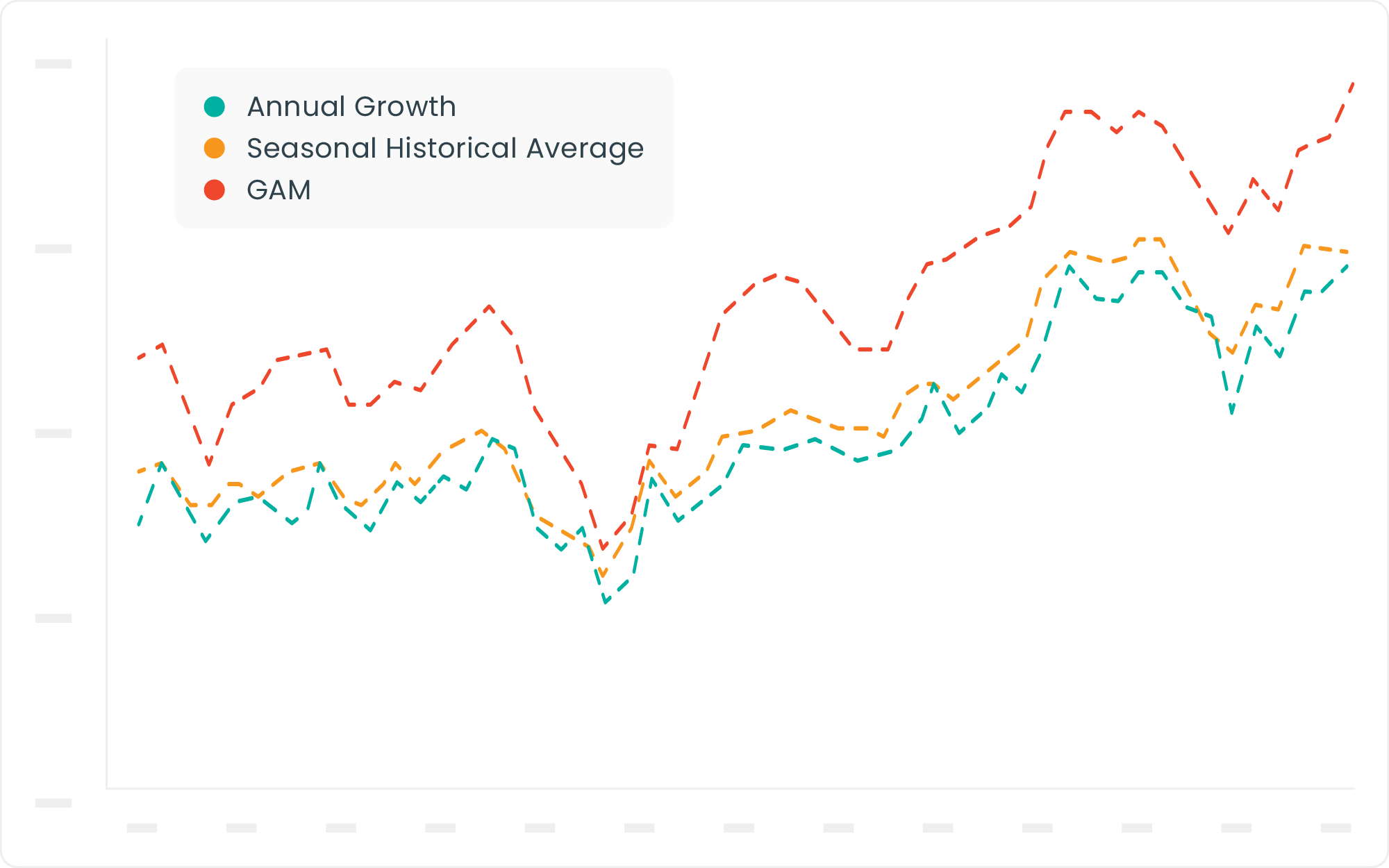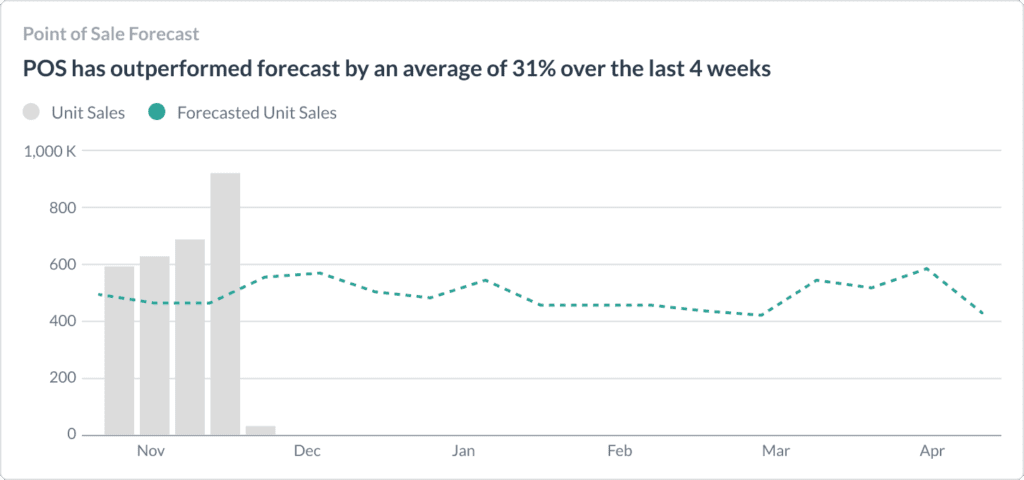
POS Forecasts in Alloy.ai

No retailer sell-through forecast? No problem. Alloy.ai offers demand planners and sales teams POS forecasts calculated down the the SKU/store level — updated weekly. Alloy.ai connects to your retail data portals and imports POS data in real time, then lets you easily toggle between different POS forecasting models to identify supply shortages and sales opportunities
Benefits of POS Forecasts in Alloy.ai
- Detailed, cross-channel POS forecasts - Alloy.ai produces short- and long-term demand sensing POS forecasts by connecting to your POS data, then incorporating SKU-level trends and seasonality at the SKU/store/channel/day level of granularity.
- Sell-in vs sell-thru forecasts - Compare your sell-in plans to actual sell-through, even if your retailers don't provide a POS forecast.
- Export POS forecasts - Alloy.ai POS forecasts can be exported into planning systems to improve the accuracy of your shipment forecast.
- Order recommendations and weeks-of-supply - Alloy.ai leverages the POS forecast for recommending incremental orders to your retail partners as well as calculating weeks-of-supply based on future demand vs historical sales.
- As accurate as top retailers - We've benchmarked our POS forecasts against those from top retailers and found that Alloy.ai forecasts perform nearly as accurately or better.
- Four forecasting models available - Historical Average, Annual Growth, GAM and Seasonal Historical Average models are available to give you greater accuracy.
- Annual Growth – A forecast that follows last year’s demand patterns at a specified growth rate.
- Historical Average – The average of recent sales, for a specified historical period.
- GAM – A machine learning model that simultaneously evaluates year-on-year trends, seasonality, holidays, and error to forecast future patterns.
- Seasonal Historical Average – An Alloy.ai proprietary model built specifically for products with high seasonality. The model accounts for recent sales volume and seasonal patterns over multiple years.

35% YoY Forecast Accuracy Improvement at Ember with Alloy.ai
Alloy.ai’s software also helps Ember drive inventory efficiency, scale its access to retail point-of-sale data, and align internal functions around a single source of truth for sales, inventory and demand planning.

Trusted by 100s of Consumer Brands

Instant sales and inventory insights at your fingertips.
Book a Demo
Frequently Asked Questions
How does Alloy.ai generate detailed POS forecasts for consumer brands?
Alloy.ai connects to retail data portals and imports POS data in real time, producing short- and long-term demand sensing forecasts at the SKU/store/channel/day level of granularity. This detailed forecasting enables brands to identify supply shortages and sales opportunities across various channels.
What forecasting models does Alloy.ai offer to enhance forecast accuracy?
Alloy.ai provides four forecasting models: Historical Average- Calculates the average of recent sales over a specified historical period. Annual Growth- Projects future demand by following the previous year’s demand patterns at a specified growth rate. GAM (Generalized Additive Model)- A machine learning model that evaluates year-on-year trends, seasonality, holidays, and errors to forecast future patterns. Seasonal Historical Average- Considers historical sales data with a focus on seasonal variations to predict future demand.
How can brands utilize POS forecasts to improve their supply chain management?
Brands can compare their sell-in plans to actual sell-through, even if retailers don’t provide a POS forecast. Alloy.ai’s forecasts can be exported into planning systems to enhance shipment forecast accuracy. Additionally, the platform provides order recommendations and calculates weeks-of-supply based on future demand versus historical sales, aiding in proactive inventory management and reducing the risk of stockouts or overstock situations.